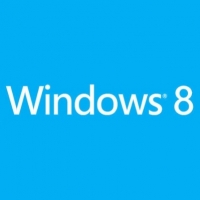Microsoft Admits Windows 8 Faults and Offers Fixes

They say the first step is admitting you have a problem—and to Microsoft’s credit, they’ve done that.
Many companies do their best to avoid acknowledging criticism of their products, and they usually do this in the face of critics by throwing out numbers to try to prove on paper why complaints are unsubstantiated. Microsoft certainly has room to make those rebukes, but it’s The Economist that makes these points of consideration for them, albeit in the middle of an article that points out the scathing reviews of Windows 8 far more prominently:
Over 90% of the world’s PCs run a version of Windows (this column is being written on one of them, albeit a version with a comforting start button rather than a confusing set of tiles). Some 76m PCs were shipped in the first three months of this year. Microsoft has sold 100m copies of Windows 8, which means that it has sold as well as Windows 7 at this stage in the cycle.
That “confusing set of tiles” is most often brought up as the primary gripe of many Windows 8 users—though I have to admit, I don’t really see the problem. Microsoft made the move, like seemingly everyone on the planet, to coincide with an obvious move toward touch-technology and if anything, Microsoft’s defense that the new format comes with a “learning curve that is definitely real” is absolutely a valid point.
Along with complaints about the tiles, other users are upset that their beloved (i.e., “familiar”) Start button is missing from Windows 8. Many were quick to point out fixes for this particular issue, even solutions that revert the layout of Windows 8 back to the classic approach of Windows 7.
With regards to IE 10 in particular, while many Windows 8 users simply choose to use another browser like Firefox or Chrome, it’s worth noting that Microsoft designed IE 10 with the iPad’s more favorable features in mind.
Although Richard Waters at Financial Times questions Microsoft’s actions when he states that Windows' “combination PC and tablet software was widely panned by reviewers,” Microsoft is hardly the only company going this route. From hybrid apps to touchscreen laptops, the lines between mobile devices and their desktop predecessors are being blurred more and more each day.
Microsoft has stated that “key aspects” of the software will be changed, and it’s with good reason they haven’t let the cat entirely out of the bag. For one, they may still be deciding what to change and what to simply require users to learn and get used to. And two, whatever changes are made, unless they’re in a revisionist fashion, they will surely annoy the critics, who will be quick to pan Microsoft’s actions by making the ludicrous request that Microsoft keep up with the times … by changing nothing at all.

